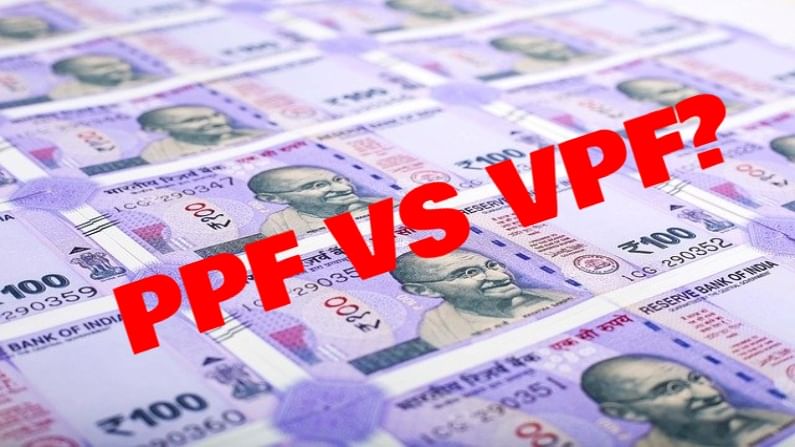Pension schemes: Should you invest in PPF or increase EPF contribution via VPF?
EPF is a highly secure tax-saving instrument that provides returns at 8.5% per annum, highest among all similar government-backed schemes

Market is abuzz with retirement schemes but if you’re specifically looking to invest in a government backed scheme, options are limited. While the Employees’ Provident Fund (EPF) and voluntary provident fund (VPF) are available to the salaried class, the National Pension Scheme (NPS) and Public Provident Fund (PPF) are available to everyone.
NPS, as we know it, is a market-linked product and the returns depend on the performance of underlying investments. Meanwhile, the remaining three schemes offer fixed interest rates.
While many people like to use a combination of EPF and PPF, the former has given higher interest returns in the past few years. Hence, increasing the contribution towards EPF can be a viable option today. Salaried employees can opt for VPF to increase their EPF savings.
Difference between EPF & PPF
A PPF account can be opened at any Indian bank with a minimum contribution of Rs 500 and maximum of Rs 1.5 lakh/year. The interest rate, which is 7.1% as of now, may change once every quarter.
In case of EPF, salaried employees can contribute up to 10-12% of the basic salary and the employer makes an equal contribution. Here, the employee can increase the EPF contribution (restricted to 12%) by opting for VPF. The interest rate on EPF is declared annually at the end of each financial year. So interest rate for the FY 2021-22 will be declared in the next financial year FY 2022-23.
“One can invest up to Rs 2.5 lakh in EPF+VPF in a financial year. Beyond that, the interest will be taxable. The minimum lock in for VPF is five years. I would recommend Rs 2.5 lakh in a given year via EPF+VPF as this is one of the highest interest options today. Since the interest rate for PPF is 7.1% and NSC is 6.8% while FDs are giving close to 5.5% so it does seem like a good option,” Shweta Jain of Investography said.
Why opt for VPF?
EPF is a highly secure tax-saving instrument that provides returns at 8.5% per annum, highest among all similar government-backed schemes.
“The interest earned as well as the maturity amounts are also tax exempt. So the returns from EPF are more or less real returns after tax. The VPF is a voluntary top-up to the EPF and is an excellent instrument that can help you build funds you can access post-retirement,” Adhil Shetty, CEO of BankBazaar.com said.
Tax benefits
VPF contributions of up to Rs.1.5 lakh are exempt from tax under Section 80C. Moreover, the interest earned as well as the maturity amounts are also tax exempt.
“The tax free nature of VPF with higher than comparable market rates tends to make it a very attractive proposition against other fixed income alternatives, that tend to either have returns that are either taxable or lower or both,” Vishal Dhawan of Plan Ahead said.
However, the recent tax changes making interest earned on EPF and VPF contributions together above Rs 2.5 lakh per annum should be kept in mind whilst making these changes, he added.
How to apply?
The process to open a VPF account is very simple.
As per the BankBazaar.com, “Employees can contact their employer’s finance team and request them to open a VPF account by submitting the registration form. The current EPF account will act as the VPF account as well.”
Drawbacks
As the EPF is meant to build up a retirement corpus, premature withdrawals are generally not allowed from your EPF account.
“You can withdraw your entire EPF savings including interest only at the time of retirement at the age of 58 years. The only exception to this is if you’ve given up working or want to be self-employed. That said, it is possible to make tax-free EPF withdrawals on the completion of five years of continuous service,” Shetty said.
However, this can be done only for specific reasons such as marriage, education, emergency medical expenses, or repayment of housing loan, and the waiting period before which you can make a withdrawal can vary depending on the purpose of withdrawal.
Impact of new changes
Interest on EPS contributions of over Rs.2.5 lakh in one FY made on or after April 1, 2021 will be taxable on withdrawal. “For smaller investors who invest less than Rs.2.5 lakh per annum in these products, they continue to be completely exempt. However, investors who invest more than Rs.2.5 lakh per annum, that’s approx. 20,833 per month, will have to pay an interest on the gains from the amount invested,” Shetty asserted.
The details of the taxation aren’t clear yet, but the expectation is that the interest will be calculated for the year of investment alone.
Why EPF over PPF?
What if the limit of Rs 1.5 lakh in PPF is already utilised? Then is it worth considering VPF over other options?
EPF is the traditional long-term instrument used for building your retirement corpus. Today, it provides the highest returns compared to other traditional debt instruments such as fixed deposits, National Savings Certificate (NSC), etc.
“However, at 8.5% returns per annum, EPF alone is insufficient to build a corpus. You should diversify a part of your investments into equity so that you have a better chance of building an inflation-proof corpus for the future,” Shetty explained.